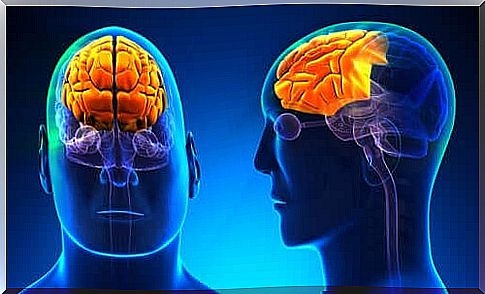Aspects And Dynamics Of Alcohol Neurobiology

Just as we have neuroanatomical and neurofunctional frameworks that explain human behavior, we also have the dynamics of alcohol neurobiology.
Alcohol is the most widely used legal drug. It is a great social and economic burden in society and can create a physical and psychological dependence.
According to the WHO, alcoholism affects 140 million people worldwide and is the fifth most common cause of premature death.
There are many diseases and conditions that are associated with alcohol consumption, from tuberculosis to HIV and infections. So what happens in the brain after alcohol intake, especially when there is an addiction?
This is where the dynamics of alcohol neurobiology play a role.
Explanation of the dynamics of alcohol neurobiology
The cause and development of alcoholism involves complex interactions between biological, psychological, social and environmental factors.
The factors that have the greatest impact are genetic and hereditary factors, which make up 60% of cases.

From a biochemical point of view, the risk of alcohol dependence is related to variations in genes encoding protein, which consist of two enzymes:
But in addition to the possible hereditary predispositions, the researchers suggest other neurobiological causes, including the decrease in the levels of the MAO-A enzyme that some people suffer from when they experience traumatic events.
There are, of course, other possible explanations for the origin of alcoholism, and this has to do with learned experiences and personality traits.
The effects are the same, but they are on a different level than the neurobiological one. However, there is a direct relationship.
The dynamics of alcohol neurobiology: hormones and neurotransmitters
Research has shown that alcohol, either directly or indirectly, interacts with a large number of neurotransmitters in the nervous system.
This interaction occurs due to the fat-soluble nature of ethanol, which means that it can cross the brain’s blood barrier and thus reach the brain.
The neurotransmitters that can interact with ethyl alcohol are as follows:
- GABA
- Glutamate
- Endogenous opioids
- Dopamine
- Adrenaline and
- Acetylcholine
- Serotonin
- Cannabinoids
- CLF
- Neuropeptide Y

Alcohol dependence is a deficiency in the physiological regulatory capacity of our endogenous motivational system. Several brain structures deal with these symptoms that affect human behavior.
Systems such as the limbic system, amygdala, hippocampus,
If these above mentioned systems do not work as they should, they may have a relationship to alcohol dependence.
The effects of alcoholism
Alcohol intake gives rise to an inhibitory effect and a depressive effect in the central nervous system. The former is characterized by a blockage of the brain structure and a change in the processes that are related to thinking, ethical values, etc. It also makes the person impulsive and gives rise to uncontrollable emotions.
The cognitive functions will also be affected. These include the functions of the frontal lobes, memory problems, hearing and vision, and motor problems.
You lose inhibitions
Alcohol causes the person to behave in a way that he would not have done if he had been sober. Alcohol can give a temporary feeling of freedom, empathy and increased emotions.
The development of alcoholism can generally be explained by the positive strengthening effect that alcohol gives rise to in the brain.
The intake of this substance activates the brain’s reward system and cause pleasant emotions that make the brain want more.
There is help and support available for those who suffer from alcoholism. Talking to a doctor is the first step to getting rid of alcohol.
As you can see, the dynamics of alcoholism’s neurobiology explain how and when behavior occurs. We hope that the methods available nowadays will be able to help with this addiction.









